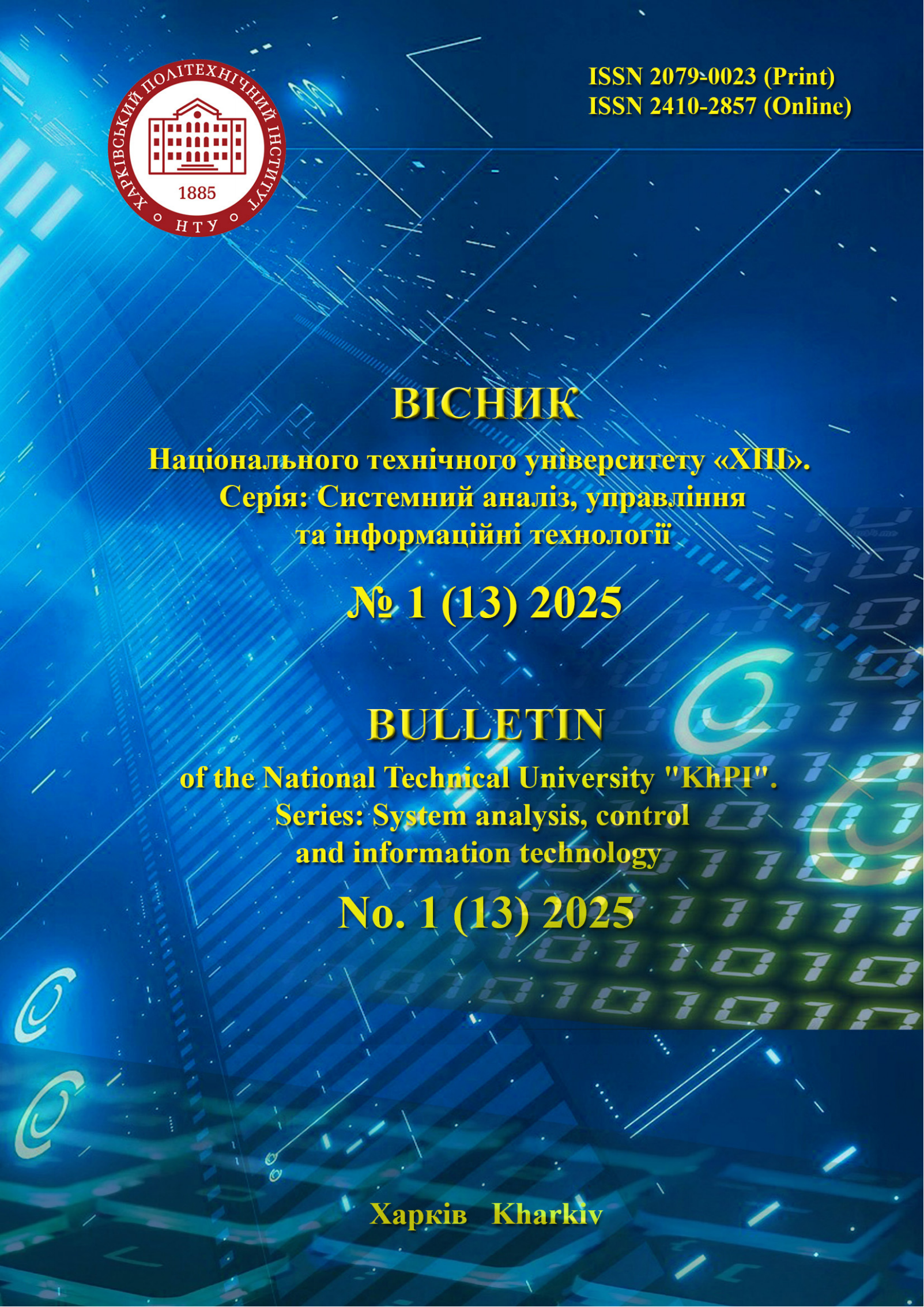SOFTWARE COMPONENT DEVELOPMENT FOR PARALLEL GATEWAYS DETECTION AND QUALITY ASSESSMENT IN BPMN MODELS USING FUZZY LOGIC
DOI:
https://doi.org/10.20998/2079-0023.2025.01.18Keywords:
business process modeling, parallel gateways, quality assessment, fuzzy logic, software componentAbstract
The quality of business process models is a critical factor in ensuring the correctness, efficiency, and maintainability of information systems. Within the BPMN notation, which is nowadays a standard of business processes modeling, parallel (AND) gateways are of particular importance. Errors in their implementation, such as incorrect synchronization or termination of parallel branches, are common and difficult to detect by traditional metrics such as the Number of Activities (NOA) or Control-Flow Complexity (CFC). In this paper, we propose a method for evaluating the correctness of AND-gateways based on fuzzy logic using Gaussian membership functions. The proposed approach is implemented as a software component that analyzes BPMN models, provided in XML format, identifies all AND-gateways, and extracts structural characteristics, i.e. the numbers of incoming and outgoing sequence flows. This features are evaluated using “soft” modeling rules based on fuzzy membership functions. Additionally, an activation function with the 0.5 threshold is used to generate binary quality indicators and calculate an integral quality assessment measure. The software component is developed using Python, as well as third-party libraries: Pandas, NumPy, and Matplotlib. A set of 3729 BPMN models from the Camunda open source repository was used for experimental calculations. Of these, 1355 models contain 3171 AND-gateways. The obtained results demonstrate that 71.2% of the gateways are correct, and 28.8% have structural violations. In 50% of the models, the quality score is 1.00, which indicates high quality, however minimum values of 0.02 indicate the need for automated verification of business process models. The considered approach allows detecting AND-gateways modeling errors, increasing the reliability of BPMN models and offering the capabilities for intelligent business process modeling support.
References
Guerreiro S., Vasconcelos A., Sousa P. Business Process Design. Available at: https://doi.org/10.1007/978-3-030-96264-7_8 (accessed: 17.04.2025).
Rivera Lazo G., Ñanculef R. Multi-attribute Transformers for Sequence Prediction in Business Process Management. Available at: https://doi.org/10.1007/978-3-031-18840-4_14 (accessed: 17.04.2025).
Vernadat F. Enterprise modelling: Research review and outlook. Available at: https://doi.org/10.1016/j.compind.2020.103265 (accessed: 17.04.2025).
Gębczyńska A., Vladova K. Comparative analysis of selected process maturity assessment models applied in the public sector, Available at: https://doi.org/10.1108/BPMJ-09-2022-0420 (accessed: 21.04.2025).
Beerepoot I. et al. The biggest business process management problems to solve before we die. Available at: https://doi.org/10.1016/j.compind.2022.103837 (accessed: 23.04.2025).
Reijers H. A. Business Process Management: The evolution of a discipline. Available at: https://doi.org/10.1016/j.compind.2021.103404 (accessed: 23.04.2025).
Correia A., Brito e Abreu F. Enhancing the correctness of BPMN models. Available at: https://doi.org/10.4018/978-1-5225-9615-8.ch017 (accessed: 22.04.2025).
Harmon P. The State of Business Process Management. Available at: https://www.researchgate.net/publication/343657721_BPTrends_Report_The_State_of_Business_Process_Management_2020 (accessed: 24.04.2025).
Khudori A., Kurniawan T. A., Ramdani F. Quality Evaluation of EPC to BPMN Business Process Model Transformation. Available at: https://doi.org/10.25126/jitecs.202052176 (accessed: 24.04.2025).
Falcone Y., Salaün G., Zuo A. Probabilistic Model Checking of BPMN Processes at Runtime. Available at: https://doi.org/10.1007/978-3-031-07727-2_11 (accessed: 25.04.2025).
Pavlicek J., Pavlickova P., Pokorná A., Brnka M. Business Process Models and Eye Tracking System for BPMN Evaluation-Usability Study. Available at: https://doi.org/10.1007/978-3-031-45010-5_5 (accessed: 28.04.2025).
Corradini F., Polini A., Re B., Rossi L., Tiezzi F. Consistent modelling of hierarchical BPMN collaborations. Available at: https://doi.org/10.1108/BPMJ-07-2021-0485 (accessed: 29.04.2025).
Fotoglou C. et al. Complexity clustering of BPMN models: initial experiments with the K-means algorithm. Available at: https://doi.org/10.1007/978-3-030-46224-6_5 (accessed: 30.04.2025).
Zhang X., Zhang X., Wang W. Fuzzy Computing. Available at: https://link.springer.com/chapter/10.1007/978-981-99-6449-9_3 (accessed: 30.04.2025).
BPMN for research. Available at: https://github.com/camunda/bpmn-for-research (accessed: 30.04.2025).
Downloads
Published
How to Cite
Issue
Section
License
LicenseAuthors who publish with this journal agree to the following terms:
- Authors retain copyright and grant the journal right of first publication with the work simultaneously licensed under a Creative Commons Attribution License that allows others to share the work with an acknowledgement of the work's authorship and initial publication in this journal.
- Authors are able to enter into separate, additional contractual arrangements for the non-exclusive distribution of the journal's published version of the work (e.g., post it to an institutional repository or publish it in a book), with an acknowledgement of its initial publication in this journal.
- Authors are permitted and encouraged to post their work online (e.g., in institutional repositories or on their website) prior to and during the submission process, as it can lead to productive exchanges, as well as earlier and greater citation of published work (See The Effect of Open Access).


